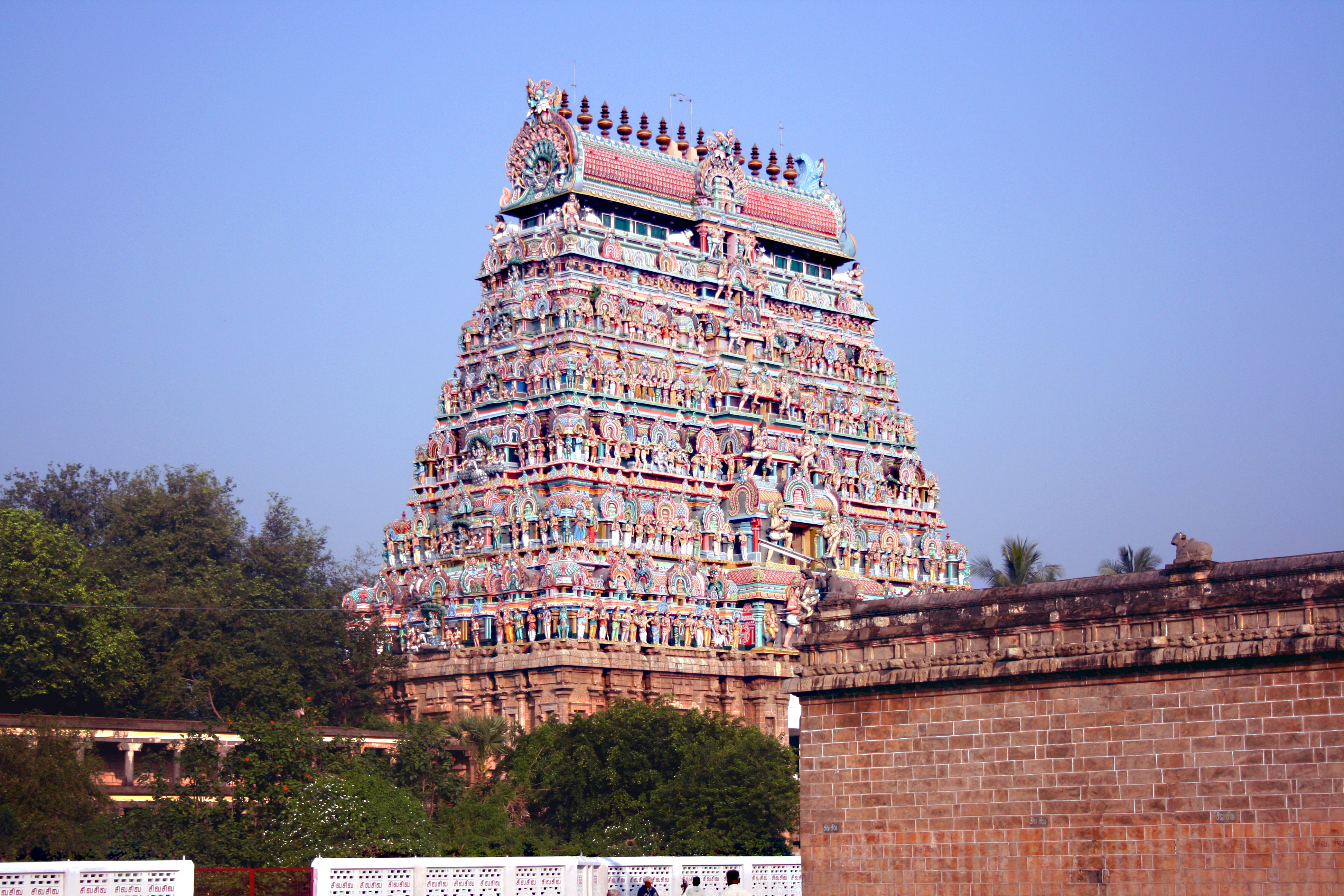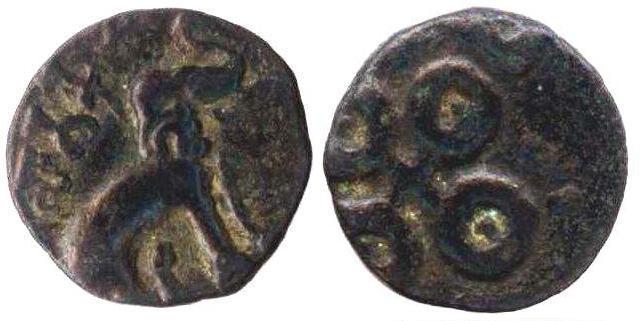|
Dikshitars
Dīkṣitars (Tamil: தீக்ஷிதர்) or Thillai Vazh Anthaanar are a Vedic Shaiva Brahmin servitor community of Tamil Nadu who are based mainly in the town of Chidambaram. Smartha (especially the Vadamas), Sri Vaishnava and other Brahmins in South India also carry the surname Dikshitars, but are different from the Chidambaram Dishitar. They are an exclusive group of Brahmins learned in the Vedas and ''Yagnas'' (sacrifices) who also serve as the hereditary trustees of the Nataraja temple in Chidambaram. They are also called ''Thillai Muvayiravar'' or the ''Three Thousand of Thillai'' Every Dikshitar once he is married becomes as of right a trustee and ''archaka'' of the Nataraja temple. A practice unique to the community is that the priests wear the tuft of hair in front of the head similar to the Nambuthiri Brahmans of Kerala. History The Dikshithars might be traced back to the first line of Brahmanas who migrated to South India from the north, this migration h ... [...More Info...] [...Related Items...] OR: [Wikipedia] [Google] [Baidu] |
Nataraja Temple, Chidambaram
Thillai Nataraja Temple, also referred as the Chidambaram Nataraja Temple, is a Hindu temple dedicated to Nataraja, the form of Shiva as the lord of dance. This temple is located in Chidambaram, Tamil Nadu, India. This temple has ancient roots and a Shiva shrine existed at the site when the town was known as Thillai. Pal 1988, p. 19 Chidambaram, the name of the city literally means "stage of consciousness". The temple architecture symbolizes the connection between the arts and spirituality, creative activity and the divine.Chidambaram Encyclopædia Britannica The temple wall carvings display all the 108 karanas from the '''' by Bharata Muni, and these postures form a foundation of |
Pancha Dravida
Pancha Dravida is one of the two major groupings of Brahmins in Hinduism, of which the other was Pancha-Gauda. In ''Rajatarangini'' Kalhana, in his ''Rajatarangini'' (c. 12th century CE), classifies the following five Brahmin communities as Pancha Dravida, stating that they reside to the south of the Vindhyas: * Karnataka (Karnataka Brahmins) * Tailanga (Telugu Brahmins) * Dravida (Brahmins of Tamil Nadu and Kerala) * Maharashtraka (Maharashtrian Brahmins) * Gurjara (Gujarati, Marwari and Mewari Brahmins) In the ''kaifiyat''s The Maratha-era ''kaifiyats'' (bureaucratic records) of Deccan, which give an account of the society in the southern Maratha country, mention the following Brahmin communities as Pancha Dravida: * Andhra-Purva Desastha * Dravida Desastha * Karnataka Brahmins * Desastha The ''kafiyat''s classify the Gurjara Brahmins as Pancha Gauda. They also mention the following 16 sub-castes of the Pancha-Dravidas: * Smarta * Konkanastha * Karhade * Varkari * Ma ... [...More Info...] [...Related Items...] OR: [Wikipedia] [Google] [Baidu] |
Vadamas
Vadama meaning "Northerners" are a sub-sect of the Iyer community of Tamil Brahmins. While some believe that their name is an indication of the fact that they were the most recent Brahmin migrants to the Tamil country others interpret the usage of the term "Vadama" as a reference to their strict adherence to the Sanskrit language and Vedic rituals which are of northerly origin. Etymology of the term The term Vadama may have originated from the Tamil term 'Vadakku' meaning North, indicating the Northern origin of the Vadama Brahmins. This claim is supported by the fact that, unlike other subsects of Iyers, some Vadama pay oblations in their daily Sandhyavandanam to the river Narmada in Central India. However, what is not certain is whether 'North' refers to northern Tamil Nadu/Southern Deccan, or regions farther north. Other scholars are of the opinion that rather than the superficial indication of a northern origin for the people, the term ''"vadama"'' would rather refer to ... [...More Info...] [...Related Items...] OR: [Wikipedia] [Google] [Baidu] |
Chola
The Chola dynasty was a Tamil thalassocratic empire of southern India and one of the longest-ruling dynasties in the history of the world. The earliest datable references to the Chola are from inscriptions dated to the 3rd century BCE during the reign of Ashoka of the Maurya Empire. As one of the Three Crowned Kings of Tamilakam, along with the Chera and Pandya, the dynasty continued to govern over varying territories until the 13th century CE. The Chola Empire was at its peak under the Medieval Cholas in the mid-9th century CE. The heartland of the Cholas was the fertile valley of the Kaveri River. They ruled a significantly larger area at the height of their power from the later half of the 9th century till the beginning of the 13th century. They unified peninsular India south of the Tungabhadra River, and held the territory as one state for three centuries between 907 and 1215 CE. K. A. Nilakanta Sastri, ''A History of South India'', p 157 Under Rajaraja I ... [...More Info...] [...Related Items...] OR: [Wikipedia] [Google] [Baidu] |
Kutruva Nayanar
Kutruva Nayanar, also known as Kootruva , Kutruva, Kutruvar, Kootruvar, Kurruva Nayanar, Kurruvar, Kurruvan, Kutruvanar, Kurrrruvar, Kalappallan and Kalappalar, was a chieftain of Kalandai and a Nayanar saint, venerated in the Hindu sect of Shaivism. He is generally counted as the 39th in the list of 63 Nayanars. Kutruva is often described as a Jain, who became a devotee of Shiva, the patron god of Shaivism. Life The life of Kutruva Nayanar is described in the Tamil ''Periya Puranam'' by Sekkizhar (12th century), which is a hagiography of the 63 Nayanars. His name "Kutruva" means the "God of death" in Tamil. The ''Periya Puranam'' narrates that Kutruva was the chieftain of Kalandai (Kalantai). He was from the Kalabhras community. He is described a devotee of Shiva. He defeated many kings and chieftains in war and acquired their wealth and territories in Pandya and Chola kingdoms. Kutruva had acquired extensive lands and wealth through his campaigns, but lacking a formal tit ... [...More Info...] [...Related Items...] OR: [Wikipedia] [Google] [Baidu] |
Sekkizhar
Sēkkilān Mādēvadigal Rāmadēva (12th century CE), known popularly by his family name as Sekkizhar, was a saint and a contemporary of Kulottunga Chola II. He compiled and wrote the '' Periya Puranam'' (Great Story or Narrative) in 4253 verses, recounting the life stories of the sixty-three Shaiva Nayanars, the devotees of Shiva. Sekkizhar himself was later canonised and his work, the Periyapuranam became the twelfth and final book of the sacred Saiva canon. Life Sekkizhar was born as Arulmozhithevan, meaning ''the one of the divine language''. He was a native of Kundrathur village (a suburb of the present-day Chennai), a sub-division of Puliyur-kottam in Thondaimandalam. Sekkizhar was a child of precious genius and having noticed this, king Anapaya, that is Kulothunga Chola II appointed him as his Prime Minister on account of his talents. His life is celebrated by Umapati Sivacharya in his fourteenth century work (1313 CE) called Sekkizhar Nayanar Puranam. Sekkizhar h ... [...More Info...] [...Related Items...] OR: [Wikipedia] [Google] [Baidu] |
Periyapuranam
The ''Periya purāṇam'' (Tamil: பெரிய புராணம்), that is, the ''great purana'' or epic, sometimes called ''Tiruttontarpuranam'' ("Tiru-Thondar-Puranam", the Purana of the Holy Devotees), is a Tamil poetic account depicting the lives of the sixty-three Nayanars, the canonical poets of Tamil Shaivism. It was compiled during the 12th century by Sekkizhar. It provides evidence of trade with West Asia The ''Periya Puranam'' is part of the corpus of Shaiva canonical works. Sekkizhar compiled and wrote the ''Periya Puranam'' or the ''Great Purana'' in Tamil about the life stories of the sixty-three Shaiva Nayanars, poets of the God Shiva who composed the liturgical poems of the Tirumurai, and was later himself canonised and the work became part of the sacred canon.A Dictionary of Indian Literature By Sujit Mukherjee. Among all the hagiographic ''Puranas'' in Tamil, Sekkizhar's ''Tiruttondar Puranam'' or ''Periyapuranam'', composed during the rule ... [...More Info...] [...Related Items...] OR: [Wikipedia] [Google] [Baidu] |
Satavahana
The Satavahanas (''Sādavāhana'' or ''Sātavāhana'', IAST: ), also referred to as the Andhras in the Puranas, were an ancient Indian dynasty based in the Deccan region. Most modern scholars believe that the Satavahana rule began in the late second century BCE and lasted until the early third century CE, although some assign the beginning of their rule to as early as the 3rd century BCE based on the Puranas, but uncorroborated by archaeological evidence. The Satavahana kingdom mainly comprised the present-day Andhra Pradesh, Telangana, and Maharashtra. At different times, their rule extended to parts of modern Gujarat, Madhya Pradesh, and Karnataka. The dynasty had different capital cities at different times, including Pratishthana (Paithan) and Amaravati ( Dharanikota). The origin of the dynasty is uncertain, but according to the Puranas, their first king overthrew the Kanva dynasty. In the post- Maurya era, the Satavahanas established peace in the Deccan region and re ... [...More Info...] [...Related Items...] OR: [Wikipedia] [Google] [Baidu] |
Mauryan
The Maurya Empire, or the Mauryan Empire, was a geographically extensive Iron Age historical power in the Indian subcontinent based in Magadha, having been founded by Chandragupta Maurya in 322 BCE, and existing in loose-knit fashion until 185 BCE. Quote: "Magadha power came to extend over the main cities and communication routes of the Ganges basin. Then, under Chandragupta Maurya (c.321–297 bce), and subsequently Ashoka his grandson, Pataliputra became the centre of the loose-knit Mauryan 'Empire' which during Ashoka's reign (c.268–232 bce) briefly had a presence throughout the main urban centres and arteries of the subcontinent, except for the extreme south." The Maurya Empire was centralized by the conquest of the Indo-Gangetic Plain, and its capital city was located at Pataliputra (modern Patna). Outside this imperial center, the empire's geographical extent was dependent on the loyalty of military commanders who controlled the armed cities sprinkling it. During As ... [...More Info...] [...Related Items...] OR: [Wikipedia] [Google] [Baidu] |
Buddhism
Buddhism ( , ), also known as Buddha Dharma and Dharmavinaya (), is an Indian religion or philosophical tradition based on teachings attributed to the Buddha. It originated in northern India as a -movement in the 5th century BCE, and gradually spread throughout much of Asia via the Silk Road. It is the world's fourth-largest religion, with over 520 million followers (Buddhists) who comprise seven percent of the global population. The Buddha taught the Middle Way, a path of spiritual development that avoids both extreme asceticism and hedonism. It aims at liberation from clinging and craving to things which are impermanent (), incapable of satisfying ('), and without a lasting essence (), ending the cycle of death and rebirth (). A summary of this path is expressed in the Noble Eightfold Path, a training of the mind with observance of Buddhist ethics and meditation. Other widely observed practices include: monasticism; "taking refuge" in the Buddha, the , and the ... [...More Info...] [...Related Items...] OR: [Wikipedia] [Google] [Baidu] |




